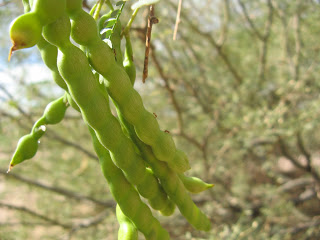 If you’re at all like me, when you hear the word “mesquite” you by default think of mesquite-smoked barbeque (or maybe a BBQ sauce with fake mesquite flavoring…). Residents of the desert southwest will have a different perspective on mesquite, and along those lines, I recently experienced a wonderful revelation. Late last year, I visited Arizona for several days as part of a press trip. (I was one of ten editors and writers invited to the Valley of the Sun by the Greater Phoenix CVB and some of its local partners.)
If you’re at all like me, when you hear the word “mesquite” you by default think of mesquite-smoked barbeque (or maybe a BBQ sauce with fake mesquite flavoring…). Residents of the desert southwest will have a different perspective on mesquite, and along those lines, I recently experienced a wonderful revelation. Late last year, I visited Arizona for several days as part of a press trip. (I was one of ten editors and writers invited to the Valley of the Sun by the Greater Phoenix CVB and some of its local partners.)
During one of the days, we made a stop at Phoenix’s Pueblo Grande Museum and Archeological Park, the site of Hohokam ruins and an excellent interpretive center. As we strolled the grounds under a scorching sun (scorching for November in Arizona… not by Phoenix-in-the-summer standards) our guide pointed out the Velvet Mesquite (Prosopis velutina), the most common mesquite in the American Southwest. The green pods (see the above photo) eventually dry, turn light tan, and fall to the ground. It’s then, I learned, that you can harvest them to make a mesquite flour or meal, once a highly common ingredient in the cuisine of the Native American tribes that lived in this area.
Mesquite flour, it turns out, has a number of healthy properties. It’s a good source of calcium, manganese, iron, zinc, potassium, and the amino acid, lysine. It’s also high in fiber, relatively high in antioxidants, and low in fat. It also has a low glycemic index, and has such a beneficial impact on blood sugar levels that it’s recommended for diabetics. (In fact, a recent rise in diabetes among certain Southwestern tribes has been specifically linked to the decreased role of mesquite in their diet…) Lastly, and best of all for NGNP readers, is that mesquite flour is gluten-free.
Mesuite flour is rarely used exclusively. Most often it’s blended with other flours in baking. Its flavor is often described as some combination of fruity, caramel, coffee, cinnamon, chocolate, and coconut.
The use of such native ingredients was once on the decline, but thankfully, there’s been a resurgence in the Southwest. In fact, mesquite flour is available at retail from companies such as Casa de Fruta, Shiloh Farms, and others, and you can also find it on Amazon and the Gluten Free Mall. However, all the locals I spoke to in Phoenix recommend getting your mesquite flour from Native Seeds / SEARCH in Tucson. SEARCH stands for Southwestern Endangered Aridland Resource ClearingHouse, and it’s a non-profit that “conserves, distributes, and documents” the agricultural seeds of the American Southwest and Northwestern Mexico. (Unfortunately, at this point almost all commercially available mesquite flour is sourced from South America, including that of SEARCH.)
Even so, it’s inspiring to see native ingredients being used in the contemporary cooking of Arizonans. Reportedly, Kai Restaurant at the Sheraton Wild Horse Pass on the Pima reservation is serving a mesquite scone. And I’m sure many other examples abound.
Of course, mesquite is just one plant. Bruce Leadbetter, a guide for 360 Adventures, says that 3,400 plants are native to the Sonoran Desert, and of those, some 550 are edible! But I like to think of that one plant – mesquite – as a starting point. I plan to pick up some mesquite flour, and to experiment using it in my gluten-free baking and cooking. I might add a little to one of my conventional recipes. But I’m even more excited to use mesquite in a true Southwestern dish…broadening my culinary horizons, while remaining happily gluten-free.
Have any of you used mesquite flour in your GF baking? If so, leave a comment and do tell!
– Pete
Chef Hymie Grande (www.chefhymiegrande.com ) is the first and only bottled BBQ sauce to carry the seal of the American Diabetes Association on the label. It has no high fructose corn syrup, no processed sugar, it is all natural and vegan friendly. It is produced at the Rutgers Food Innovation Center in Bridgton, NJ by Jamie Failtelson, a.k.a. Chef Hymie Grande of Carlstadt, NJ. 5% of proceeds go to the American Diabetes Association.